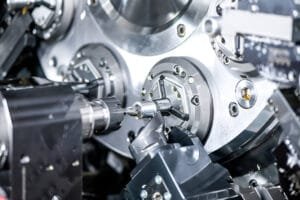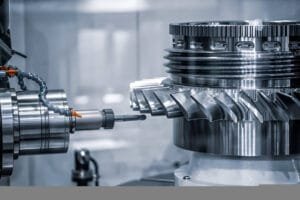In modern manufacturing, the CNC machine plays an indispensable role. Whether it’s automotive parts, aerospace components, or precision molds, CNC machine are the backbone of efficient and accurate production. Have you ever wondered how the rotary axis—often called the “heart” of a CNC machine—affects overall machine performance?
Today, let’s explore how both the configuration and material of the rotary axis influence the machining accuracy, efficiency, and lifespan of your CNC machine. By the end of this article, you’ll not only understand the importance of the rotary axis but also learn how to choose the most suitable configuration and material for your factory’s needs. Let’s dive in!
Basic Types and Configurations of CNC Machine Rotary Axes
The rotary axis is a key component that enables multi-angle and multi-directional machining in a CNC machine. Common rotary axes include the fourth and fifth axes, which make complex 3D machining possible.
- Fourth Axis: Usually rotates around the X or Y axis, ideal for processing cylindrical workpieces.
- Fifth Axis: Adds more degrees of freedom, enabling the machining of complex surfaces.
Configuration parameters such as stepper motor type, gear ratio, and pulse count directly impact the movement accuracy and speed of the rotary axis. For example, a higher gear ratio means more precise positioning, but possibly at the expense of speed. By carefully configuring these parameters, you can ensure high machining quality while boosting productivity.
How Rotary Axis Material Selection Affects CNC Machine Performance
The material of the rotary axis is a crucial factor in its performance. Common materials include:
| Material Type | Advantages | Disadvantages | Suitable Applications |
|---|---|---|---|
| Alloy Steel | High strength, rigidity, wear-resistant | Heavier, higher cost | Heavy-duty, high-precision machining |
| Stainless Steel | Corrosion and wear-resistant | Slightly lower rigidity, higher cost | Humid or corrosive environments |
| Aluminum Alloy | Lightweight, easy to machine | Less wear-resistant, lower rigidity | Light-load, high-speed rotation |
Material choice directly affects the rigidity and wear resistance of the rotary axis, which in turn impacts machining accuracy and the machine’s lifespan. Selecting the right material can improve machining quality and reduce maintenance costs.
The Synergy Between Rotary Axis Configuration and Material in CNC Machine Performance
You might wonder, which is more important: configuration or material? In fact, they complement each other. Proper configuration brings out the best in quality materials, while premium materials need the right configuration to reach their full potential.
For example, if you choose a high-rigidity alloy steel rotary axis but pair it with a motor and control system that can’t precisely control the rotation angle, machining accuracy will still suffer. Conversely, even the best configuration can’t compensate for poor material, which may lead to rapid bearing wear or excessive vibration.
Optimizing both the configuration and material of the rotary axis can significantly enhance machining speed, accuracy, and equipment stability, ultimately improving overall production efficiency.

Industry Applications and Selection Advice
Different industries have varying requirements for CNC machine rotary axes:
- Automotive Manufacturing: Emphasizes high rigidity and wear resistance, making alloy steel rotary axes a good choice.
- Aerospace: Demands extreme precision and corrosion resistance, often using stainless steel or special alloys.
- Mold Making: Requires quick switching and lightweight design, sometimes favoring aluminum alloy rotary axes.
When selecting a rotary axis, consider not only the material and configuration but also your specific machining processes and workpiece characteristics. We recommend contacting us for professional advice on custom rotary axis configurations and materials to ensure your CNC machine performs at its best.
The configuration and material of the rotary axis are two key factors that affect CNC machine performance. The right material ensures durability and rigidity, while proper configuration guarantees machining accuracy and efficiency. Together, they help your CNC machine stand out in a competitive market.
If you’re looking for ways to enhance your CNC machine’s performance, start by focusing on the rotary axis configuration and material. Feel free to contact us—we’re happy to provide tailored solutions to help your production line become more efficient and precise!
Want to learn more about CNC machine technology and selection tips? Don’t forget to follow us for the latest industry insights and technical updates!
FAQ
Consider your application needs. Used for heavy-duty and high-precision work, choose alloy steel. For corrosive environments, stainless steel is best. For lightweight and fast operations, aluminum alloy is a good option. When in doubt, contact us for expert advice!
Yes! Proper configuration ensures precise movement and positioning, directly impacting machining accuracy and efficiency.
In most cases, yes. Upgrading the rotary axis can improve performance and extend your machine’s lifespan. Reach out to us for tailored upgrade solutions!





